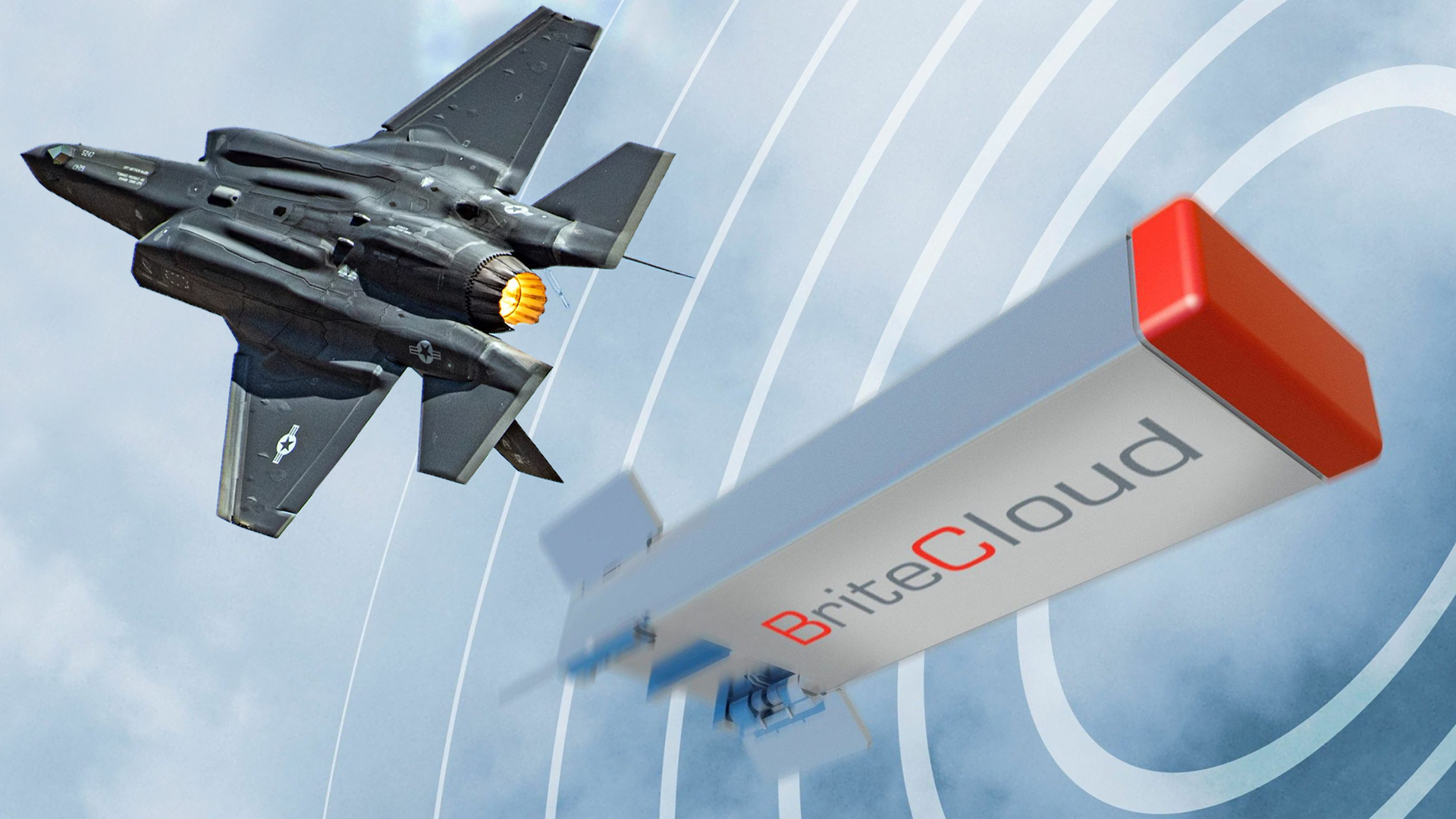An active expendable decoy, or AED capability has been tested on U.S. F-35 stealth fighters, resulting in a decision to field this operationally. The move apparently involves the British-made Leonardo BriteCloud, a small active-radar decoy that we have discussed at length in the past and which promises to enhance the F-35’s ability to defeat various types of air defense system threats. Roughly the size of a soda can, the decoy contains a jammer to spoof hostile surface-to-air and air-to-air systems and is designed to be launched out of standard chaff and flare dispensers.
The Naval Air Systems Command (NAVAIR) announced today that it will negotiate and award a fixed-price contract to Leonardo that will cover an estimated 1,000-2000 AEDs per year. The contract will also include impulse cartridges, related support equipment and repairs, and field service support for the F-35. The contract is planned to satisfy requirements for Fiscal Year (FY) 2025 through FY2027.
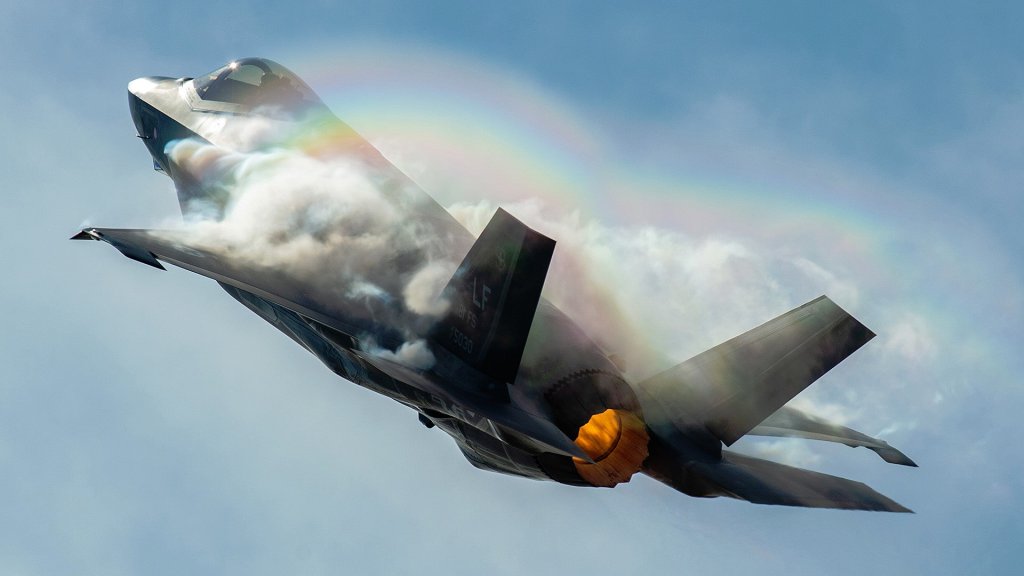
Not mentioned by name is the BriteCloud decoy, although the fact that Leonardo’s U.K. division is the sole source makes this more than likely. The announcement describes Leonardo as the only “contractor who possesses the manufacturing technology, infrastructure, capacity, and platform qualifications to complete all requirements.” A previous requirement that was posted on July 6 also details a system that sounds identical to BriteCloud.
In that earlier announcement, the required capabilities of the AED are outlined as follows:
- The contractor must possess the manufacturing technology, infrastructure, and capacity to produce the self-contained RFCM [radio-frequency countermeasures], battery-operated free-fall decoys and conduct verification and inspection testing, as required, for the estimated quantities and within the required timelines
- 2-inch x 1-inch x 8-inch form factor
- Mission load programmable by the government
- Demonstrated RFCM performance capability evaluated at TRL-9, defined as: “Actual system proven through successful mission operations”
- Evaluated at MRL-9, defined as: “demonstrated low-rate production capability in place to begin full-rate production”
- Must be qualified for use on F-35 and ready for immediate production
Regarding the form factor, Leonardo has developed a version of the BriteCould — known as the BriteCloud 218, or AN/ALQ-260(V)1 under the U.S. designation system — specifically intended to be loaded in standardized 2-inch x 1-inch x 8-inch countermeasure dispensers such as the widely used AN/ALE-47, as well as the F-35’s countermeasure dispenser system. The BriteCloud 218, at least, has been previously tested on other U.S. platforms, namely the F-16 fighter, leading to a fielding recommendation from the U.S. Air National Guard in 2022.

The earlier announcement also provides more details on delivery quantities and timelines, namely a requirement for approximately 1,000 AEDs per year for the first two years, increasing to approximately 2,000 after that, through FY2029.
With the contract award planned for November 2024, NAVAIR is hopeful that deliveries will commence “as early as four months but no later than 10 months” after this milestone. Initial production is anticipated to be 120 decoys per month.
Not announced are which versions of the Joint Strike Fighter will be equipped with the new AEDs. However, since the U.S. Navy is the current head of the F-35 Joint Program Office, via NAVAIR, it could be for any one or more of the U.S. Air Force’s conventional takeoff and landing (CTOL) F-35A, the short takeoff and vertical landing (STOVL) F-35B operated by the U.S. Marine Corps, and the F-35C carrier version flown by the U.S. Navy and the Marine Corps. At the same time, F-35s of different versions operated by export customers could also be included.
A video showing the attributes of the BriteCloud 55 version, which was developed for the Eurofighter Typhoon and Saab Gripen:

Similarly, while it has been confirmed that “F-35 aircraft have tested and integrated AED capability, which resulted in a fielding decision,” it’s not mentioned when or where this testing took place and which variants of the aircraft were involved.
As for BriteCloud, this is a system that we have followed closely for some time now and one that epitomizes Leonardo’s position as a leading developer of expendable, active, electronic-warfare-enabled countermeasures. The decoy was developed for crewed aircraft but is increasingly also being explored as a countermeasure carried by drones or even by the SPEAR-EW, a version of the SPEAR 3 miniature cruise missile with a non-kinetic payload.

In the case of the F-35, the BriteCloud will be launched from standard countermeasures dispensers. Each of these decoys contains an electronic warfare payload, in the form of a digital radio frequency memory (DRFM) jammer. This first detects incoming radar pulses from hostile platforms, including aircraft, ships, and ground-based air defense systems, as well as active radar guidance systems on incoming missiles. It then mimics those signals in return, creating the appearance of a false target. The overall effect is designed to confuse hostile radars and lure missiles away from friendly aircraft.
BriteCloud first entered Royal Air Force service in 2018 on the now-retired Tornado GR4 combat jet. A year later, the service began tests of the decoy on its Eurofighter Typhoons and also suggested that it might also eventually integrate them on its F-35B Lightnings.
The stand-in decoys will provide just one element of an increasingly sophisticated countermeasures suite that will protect the F-35 (or at least some of them, in the case of BriteCloud).
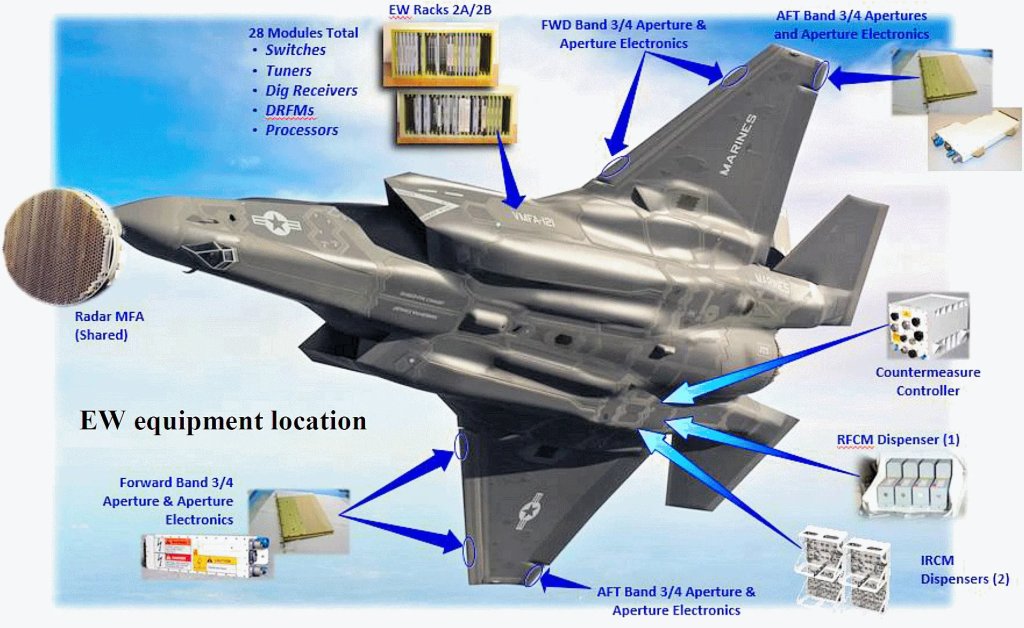
Back in 2019, we reported on the U.S. Air Force’s plans to integrate a new, advanced chaff countermeasure onto its F-35As. While chaff cartridges, which release radar reflective material to blind and confuse enemy aircraft and air defenses, were already found across most of the service’s other combat aircraft, they were initially absent from the F-35, perhaps due to the otherwise extensive defensive suite of the aircraft, which obviously also benefits from its stealth features.
Flares, however, and towed decoys, or at least the capacity to install them, were previously included in the F-35’s self-defense repertoire.
The F-35’s advanced electronic-warfare-enabled towed decoy, known as the ALE-70, is a particularly noteworthy item, a little-known capability that is concealed beneath the aircraft’s stealthy skin when not in use. You can read more about it, and its importance to the aircraft’s survivability, here.
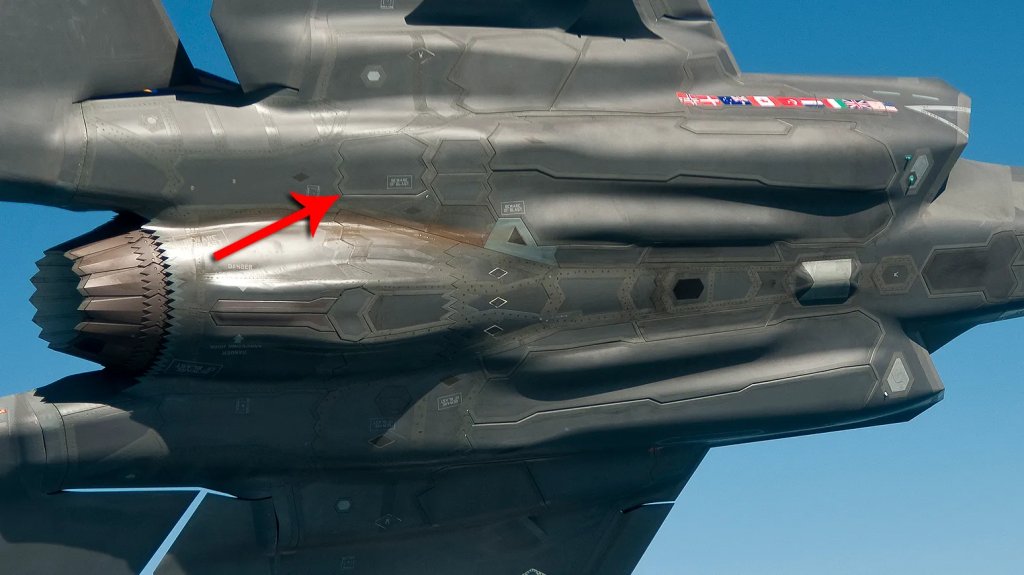
While the ALE-70 offers the F-35 an enhanced level of protection against radar and radar-guided threats, that capability is now set to be enhanced on at least some of the aircraft, apparently via BriteCloud.
No single defensive subsystem is infallible, which is why the F-35 goes into combat toting chaff, flares, and towed decoys, to support its already potent electronic warfare capabilities, with the highly integrated AN/ASQ-239 system.
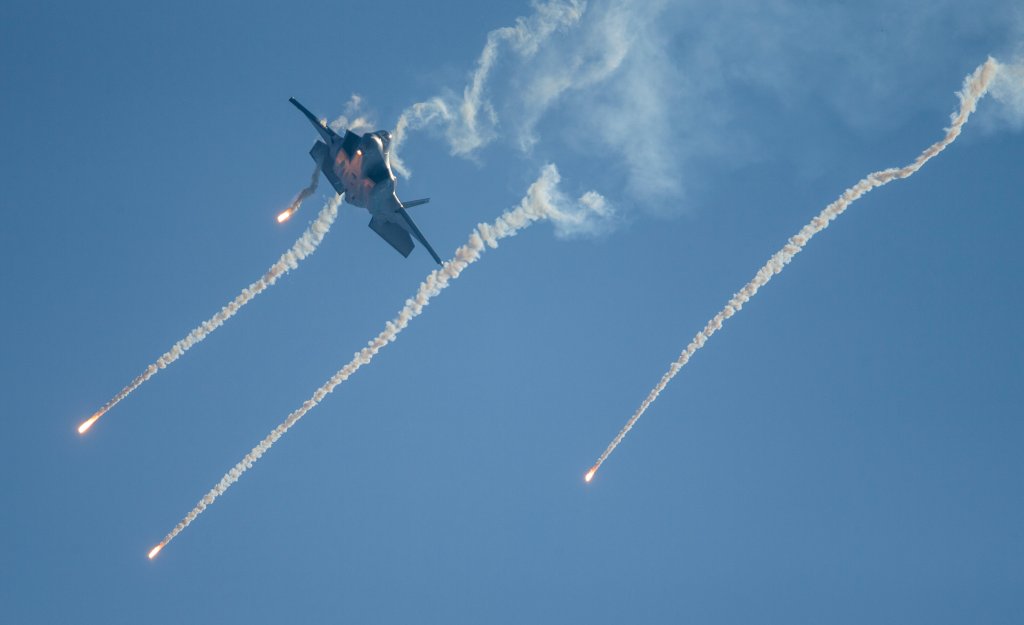
It’s also worth noting that the combination of the ALE-70 and BriteCloud would seem to be particularly relevant in terms of protecting the aircraft from detection and engagement from rear aspects. After all, like most stealth aircraft, the F-35 is most effective at evading hostile radar from certain aspects, with the frontal-hemisphere profile being the most optimized in this respect. When viewed from rearward angles, the F-35’s stealth aspects are understood to be somewhat less effective — although still better than almost any other fighter aircraft — which is where the ALE-70 and BriteCloud could really offer significant benefits. Also, the aircraft’s low-observable features are uniquely tailored to evade fire control radars operating in common bands, such as the X-band. They are less effective against radars operating significantly disparate bands. This is where systems like BriteCloud could also come in very handy, along with the rest of the F-35’s electronic warfare suite.
Another key development for that electronic warfare suite is also upcoming, namely the Block 4 upgrade. While this includes a host of advanced new capabilities, the head of Air Combat Command has previously gone on record to say that the electronic warfare suite is the biggest advantage associated with Block 4. However, problems with the TR-3 hardware and software enhancements that are required to underpin Block 4 have seen the program delayed and deliveries of new aircraft suspended until recently. The latest suggestions are that the Block 4 upgrade may have to be “reimagined” and that some elements will be delayed until the 2030s. Nevertheless, once it’s online, it promises to make the F-35 even more capable from an electronic warfare perspective.
In the meantime, with the innovative BriteCloud seemingly set to be added to its self-protection repertoire, the F-35 will be even better placed to keep one step ahead of the kinds of air defenses that make for ever more threatening environments, even for cutting-edge stealth platforms.
Contact the author: thomas@thewarzone.com
